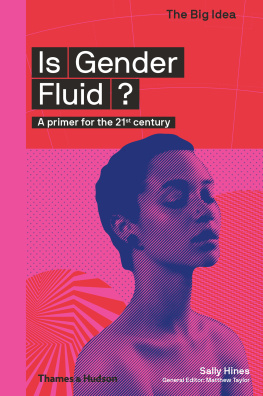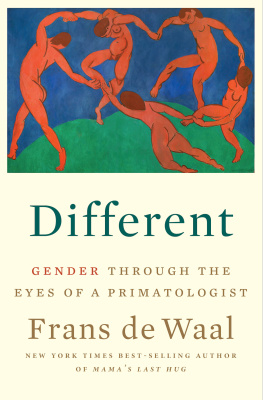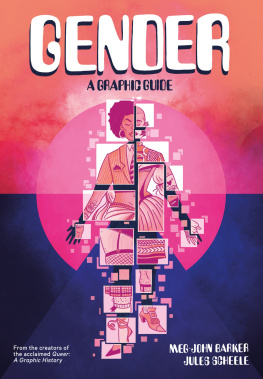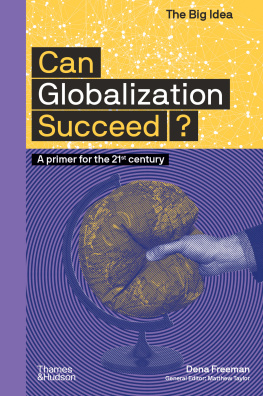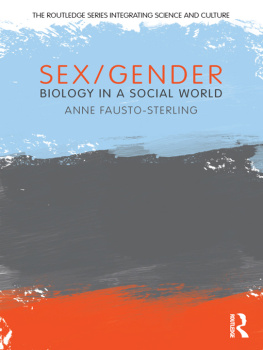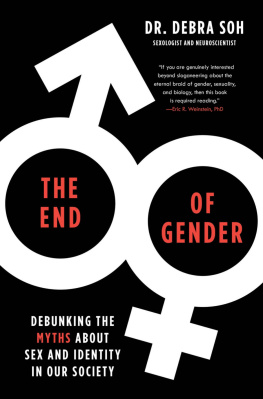Quick-recognition text hierarchy
Read this book in the way that suits you best. Paragraphs are prioritized using different font sizes. The larger the font size the more important the words are to the overall concept or argument.
So, if you only have half an hour to spare, just read the paragraphs set in the two largest font sizes and youll still get a basic overview of the subject.
With an hour at your disposal, get a deeper understanding of the principles and arguments by reading all the paragraphs apart from those in the smallest font size.
If you can set aside a couple of hours, youll be able to read the entire book and get both a well-balanced overview and a detailed comprehension of individual concepts.
Pertinent and punchy imagery
Images are as much a part of the debate as the text itself. Juxtaposed in a thought-provoking way, or used to expand on the argument, they offer additional insights throughout.




About the Author and Editor
Sally Hines is Associate Professor of Sociology and Gender Studies at the University of Leeds, where she was also Director of the Centre for Interdisciplinary Gender Studies from 2009 to 2014. She specializes in gender, sexuality, intimacy and the body, and her work on transgender draws on the intersections and disconnections of gender, sexuality and embodiment in this area. She has published numerous articles on the subject of gender diversity and identity, as well as four books, of which the most recent is Gender, Society and Culture. She is co-founder and co-convener of Sexgen, an interdisciplinary network that brings together gender studies centres. She is the Principal Investigator of the three-year international project Pregnant Men: An International Exploration of Trans Male Experiences and Practices of Reproduction, with co-investigators from the UK, US, Australia, Poland and Italy.
Matthew Taylor is Chief Executive of the RSA, a 250-year-old British institution devoted to enriching society through ideas and action to deliver a 21st-century enlightenment. A writer, public speaker and broadcaster, he has written numerous articles on policy, politics, public service reform and cultural theory, and frequently appears on Newsnight, The Daily Politics, and Radio 4s Today and The Moral Maze. He was previously General Secretary and Chief Executive of the Institute for Public Policy Research, Britains leading think tank.
Other titles of interest published by
Thames & Hudson include:
Is Capitalism Working?
Is Democracy Failing?
What Shape Is Space?
See our websites
www.thamesandhudson.com
www.thamesandhudsonusa.com
Contents



A Traditional gender roles in the nuclear family are represented in a Nestl magazine advertisement from the 1960s.
In its exploration of different understandings and practices of gender, this book examines the meaning of gender itself. As will become clear, the question What is gender? is not at all straightforward. In this book, for example, the term sex generally refers to biological characteristics, whereas gender addresses social and cultural factors.
The relationship between sex and gender is complex, and in fact there exist several starkly different ways of understanding gender.
For some people, gender derives from the biological, reproductive characteristics of sex that is to say, from the physical, hormonal and chromosomal differences that, they argue, definitively separate male from female. For others, gender is an expression of social norms a combination of the behaviours, roles and expectations through which a society defines women and men. Many people see gender as a combination of these biological and social factors. But today, an increasingly large group of people say that gender is not hard-wired and can be understood and expressed in a far more diverse range of ways.
In addition, the work of scientists such as Anne Fausto-Sterling (b. 1944) and Cordelia Fine (b. 1975) has highlighted that some of the physical and physiological differences between the sexes are not as clear-cut as we might think. From any of these perspectives, gender may be understood to be somehow mutable or malleable or, to put it another way, gender might be thought of as fluid.
The idea of gender fluidity suggests that gender is not fixed by biology, but shifts according to social, cultural and individual preference.

B Trans women pose in a hotel room in San Francisco, California, in 1981. Despite increasing recognition, transgender people were classified by the American Psychiatric Association in 1980 as having gender identity disorder.

A Part of the Israel Defense Forces, the mixed Caracal infantry battalion is one of three full combat units that include both male and female soldiers.
In order to understand this more easily, we might imagine gender as a combination of three factors. Body, or physicality, comprises the reality of each persons body, how they experience it and how others interact with that person based on their body. This physical aspect of gender interacts with gender identity and gender expression . A persons gender identity can remain fixed or can fluctuate over time; can be aligned with or be in contrast to the sex they are assigned at birth; and can be articulated through or contradicted by their gender expression.
Gender identity refers to each persons internal sense of being male, female, a combination of the two, or neither; it is a core part of who people know themselves to be.
Gender expression is how a person presents their gender to the world, and also how the world interacts with and shapes their gender. This is related to gender roles and how society enforces conformity to those roles.
Genderfluid people experience their gender identity as changing over time or between different situations, and may not feel restricted to any one gender identity.
Genderflux people experience their gender identity as more or less intense at different times.
Non-binary describes any gender identity or expression outside the categories of male and female.

